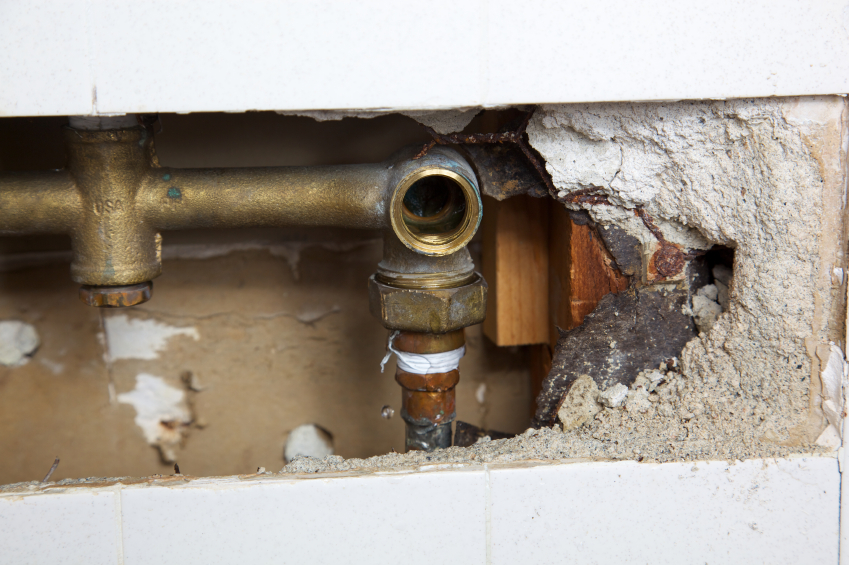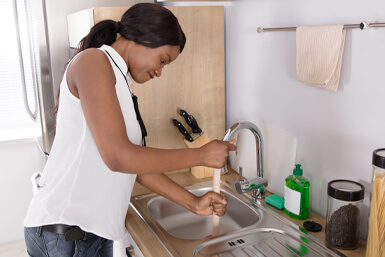This article in the next paragraphs involving Why Your Water Pipes Are Noisy and How To Shut Them Up is indeed stimulating. You should investigate for yourself.

To detect noisy plumbing, it is necessary to determine initial whether the unwanted noises take place on the system's inlet side-in other words, when water is transformed on-or on the drainpipe side. Noises on the inlet side have actually varied reasons: excessive water pressure, used valve and also faucet components, improperly connected pumps or other devices, improperly placed pipeline fasteners, and also plumbing runs consisting of way too many tight bends or various other restrictions. Noises on the drainpipe side usually come from inadequate location or, just like some inlet side sound, a layout consisting of tight bends.
Hissing
Hissing noise that takes place when a tap is opened slightly typically signals extreme water stress. Consult your local public utility if you believe this problem; it will certainly have the ability to tell you the water pressure in your location and also can mount a pressurereducing valve on the incoming water pipeline if necessary.
Thudding
Thudding noise, usually accompanied by shuddering pipes, when a tap or device valve is shut off is a problem called water hammer. The noise and resonance are brought on by the resounding wave of stress in the water, which suddenly has no place to go. Often opening up a shutoff that releases water promptly into a section of piping including a limitation, arm joint, or tee installation can generate the same condition.
Water hammer can typically be treated by installing fittings called air chambers or shock absorbers in the plumbing to which the problem valves or faucets are linked. These gadgets enable the shock wave produced by the halted circulation of water to dissipate airborne they have, which (unlike water) is compressible.
Older plumbing systems might have brief vertical sections of capped pipe behind walls on faucet runs for the exact same function; these can ultimately full of water, minimizing or destroying their effectiveness. The treatment is to drain pipes the water supply entirely by shutting down the primary water system shutoff as well as opening all faucets. Then open the main supply shutoff as well as shut the taps one by one, starting with the faucet nearest the valve and also finishing with the one farthest away.
Babbling or Shrilling
Extreme chattering or shrieking that occurs when a shutoff or tap is activated, which typically vanishes when the fitting is opened fully, signals loose or malfunctioning inner components. The solution is to change the shutoff or faucet with a brand-new one.
Pumps and also devices such as cleaning makers and also dish washers can transfer motor noise to pipelines if they are poorly linked. Connect such products to plumbing with plastic or rubber hoses-never stiff pipe-to isolate them.
Other Inlet Side Noises
Creaking, squeaking, scratching, snapping, and also touching generally are caused by the expansion or tightening of pipelines, normally copper ones providing hot water. The sounds occur as the pipelines slide versus loosened fasteners or strike neighboring residence framework. You can typically identify the location of the problem if the pipelines are subjected; just follow the sound when the pipelines are making sounds. Most likely you will certainly find a loose pipeline wall mount or an area where pipes exist so near floor joists or other mounting items that they clatter versus them. Connecting foam pipe insulation around the pipelines at the point of call ought to remedy the trouble. Make certain straps and wall mounts are safe and secure as well as provide ample assistance. Where possible, pipeline bolts ought to be attached to substantial structural components such as structure walls rather than to framing; doing so decreases the transmission of vibrations from plumbing to surfaces that can magnify as well as move them. If attaching bolts to framing is unavoidable, cover pipes with insulation or other resistant product where they contact bolts, and sandwich completions of new bolts between rubber washing machines when mounting them.
Correcting plumbing runs that experience flow-restricting limited or numerous bends is a last resource that should be embarked on only after getting in touch with a competent plumbing service provider. Unfortunately, this circumstance is rather common in older residences that might not have been developed with indoor plumbing or that have seen numerous remodels, especially by beginners.
Drainpipe Sound
On the drainpipe side of plumbing, the chief objectives are to eliminate surface areas that can be struck by dropping or rushing water and also to insulate pipes to have unavoidable noises.
In brand-new building, bath tubs, shower stalls, toilets, as well as wallmounted sinks and containers need to be set on or against durable underlayments to lower the transmission of sound with them. Water-saving commodes and faucets are much less loud than conventional models; install them rather than older kinds even if codes in your area still permit utilizing older components.
Drainpipes that do not run vertically to the cellar or that branch right into horizontal pipe runs sustained at floor joists or other mounting existing particularly problematic noise troubles. Such pipelines are large enough to radiate significant vibration; they likewise lug substantial quantities of water, that makes the scenario even worse. In brand-new building and construction, specify cast-iron soil pipelines (the large pipes that drain bathrooms) if you can afford them. Their massiveness includes much of the noise made by water going through them. Likewise, prevent directing drainpipes in walls shared with rooms as well as spaces where people gather. Walls including drainpipes should be soundproofed as was described previously, making use of dual panels of sound-insulating fiber board and wallboard. Pipelines themselves can be covered with unique fiberglass insulation made for the purpose; such pipes have an impervious vinyl skin (in some cases containing lead). Results are not always satisfactory.
3 Most Common Reasons for Noisy Water Pipes
Water hammer
When water is running and is then suddenly turned off, the rushing liquid has no place to go and slams against the shut-off valve. The loud, thudding sound that follows is known as a water hammer. Besides being alarming, water hammer can potentially damage joints and connections in the water pipe itself. There are two primary methods of addressing this issue.
Check your air chamber. An air chamber is essentially a vertical pipe located near your faucet, often in the wall cavity that holds the plumbing connected to your sink or tub. The chamber is filled with air that compresses and absorbs the shock of the fast moving water when it suddenly stops. Unfortunately, over time air chambers tend to fill with water and lose their effectiveness. To replenish the air chambers in your house you can do the following. Turn off the water supply to your house at the main supply (or street level). Open your faucets to drain all of the water from your plumbing system. Turn the water back on. The incoming water will flush the air out of the pipes but not out of the vertical air chamber, where the air supply has been restored. Copper pipes
Copper pipes tend to expand as hot water passes through and transfers some of its heat to them. (Copper is both malleable and ductile.) In tight quarters, copper hot-water lines can expand and then noisily rub against your home's hidden structural features — studs, joists, support brackets, etc. — as it contracts.
One possible solution to this problem is to slightly lower the temperature setting on your hot water heater. In all but the most extreme cases, expanding and contracting copper pipes will not spring a leak. Unless you’re remodeling, there's no reason to remove sheetrock and insert foam padding around your copper pipes.
Water pressure that’s too high
If your water pressure is too high, it can also cause noisy water pipes. Worse, high water pressure can damage water-supplied appliances, such as your washing machine and dishwasher.
Most modern homes are equipped with a pressure regulator that's mounted where the water supply enters the house. If your home lacks a regulator, consider having one professionally installed. Finally, remember that most plumbers recommend that water is delivered throughout your home at no lower than 40 and no greater than 80 psi (pounds per square inch).
Whatever the state of your plumbing, one thing is certain — you’re eventually going to encounter repair and replacement issues around your home that require professional help. That’s where American Home Shield can come to your aid.
https://www.ahs.com/home-matters/repair-maintenance/causes-of-noisy-water-pipes/

I recently found that blog posting on Why Your Water Pipes Are Noisy and How To Shut Them Up while doing a lookup on the internet. For those who enjoyed reading our blog post kindly do not forget to share it. Thanks so much for your time spent reading it.
Go Services